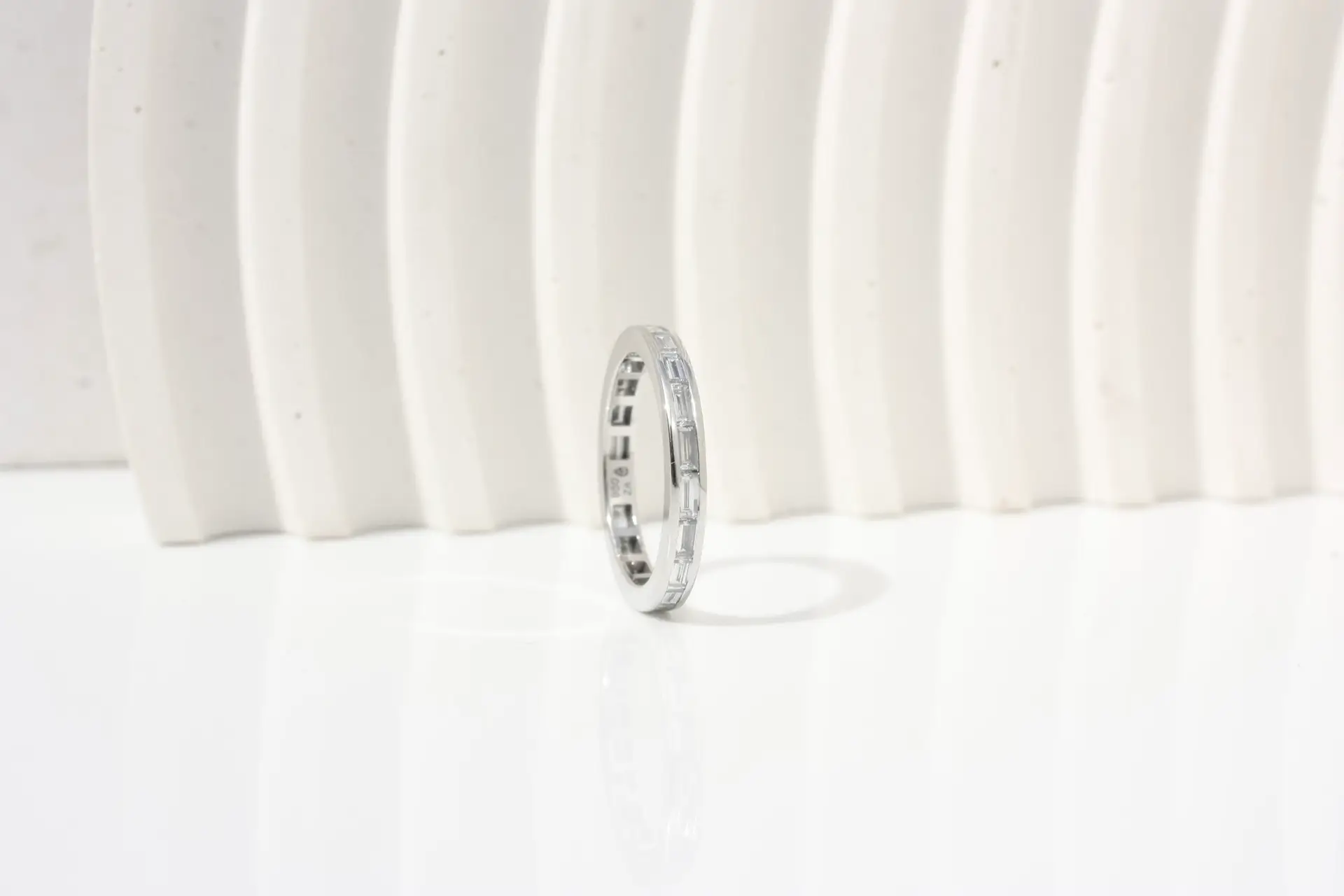

Sleek, understated, and effortlessly elegant—baguette gemstones have long captivated jewellers and collectors alike. Beyond their clean lines and step-cut facets lies a rich history, tracing a path from Art Deco glamour to modern haute joaillerie.
The story of baguette gemstones begins in the late 1920s, amid the glamour of the Art Deco era, where linear, geometric forms reigned supreme. Centuries before the advent of modern cutting technology, diamond cutters faced formidable challenges, and step cuts, such as the baguette, offered an elegant solution—combining practicality with understated elegance. Perfected through advancing cutting techniques, this step-cut gemstone quickly became a signature of the period, embraced by legendary maisons such as Cartier and Van Cleef & Arpels. The name Baguette, while often associated with the French bread, is more accurately derived from the French word for “stick”—aptly reflecting its slender, rectangular silhouette.
The baguette cut is an elongated step cut, typically rectangular, with 14 to 24 parallel facets running along the stone’s edges. Unlike triangular facets, these broad, linear planes produce a sophisticated, reflective light rather than a fiery sparkle. The allure of a baguette diamond lies in its glass-like brilliance, which emphasises clarity and polish over internal scintillation, while its linear facets beautifully showcase colour and clarity in gemstones.
With its flat surfaces and minimal facets, the baguette cut demands exceptional precision, as any imperfection or misalignment is immediately apparent. When multiple baguette gemstones are set together, each stone must be aligned with meticulous care to achieve flawless symmetry. They are most often set in channels, both to protect their delicate corners and to maintain a clean, uninterrupted flow of light across the piece.
There are two primary types of baguette cuts: straight and tapered. Designers often use straight baguettes with perfectly parallel sides in eternity bands, tennis bracelets, and other creations that emphasise continuity and symmetry. Their uniform shape creates a seamless rhythm when set in rows.
Baguettes are cut in two primary forms: straight and tapered. Straight baguettes, with perfectly parallel sides, are often chosen by jewellers for eternity bands, tennis bracelets, and designs that celebrate continuity and symmetry. Their uniform shape creates a seamless rhythm when set in rows, offering understated elegance.
Tapered baguettes narrow gently toward one end, forming a subtle trapezoidal silhouette. This shape makes them ideal as side stones in engagement rings, providing a seamless, elegant transition between the band and a larger centre stone.

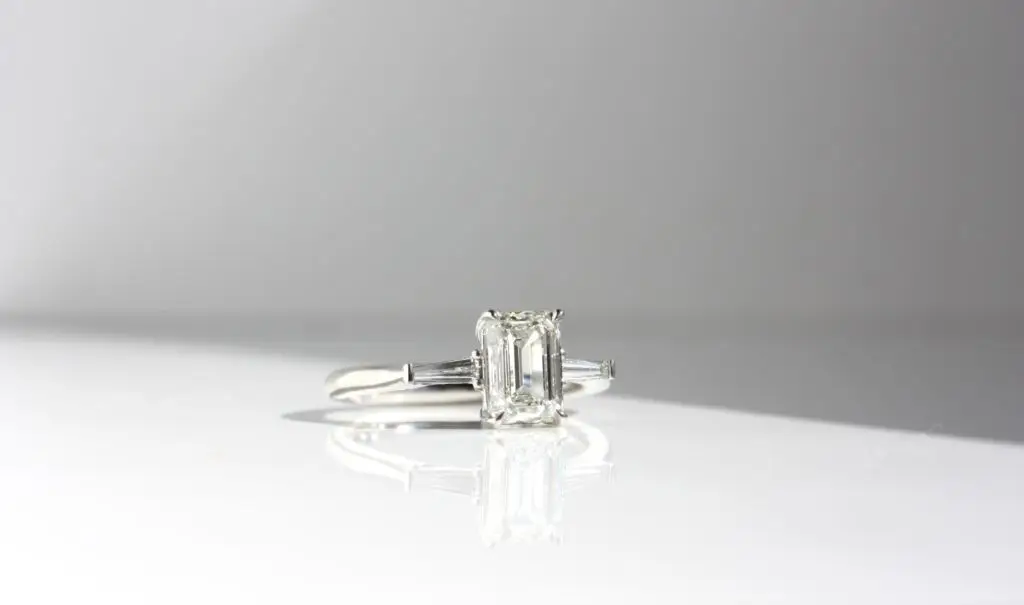
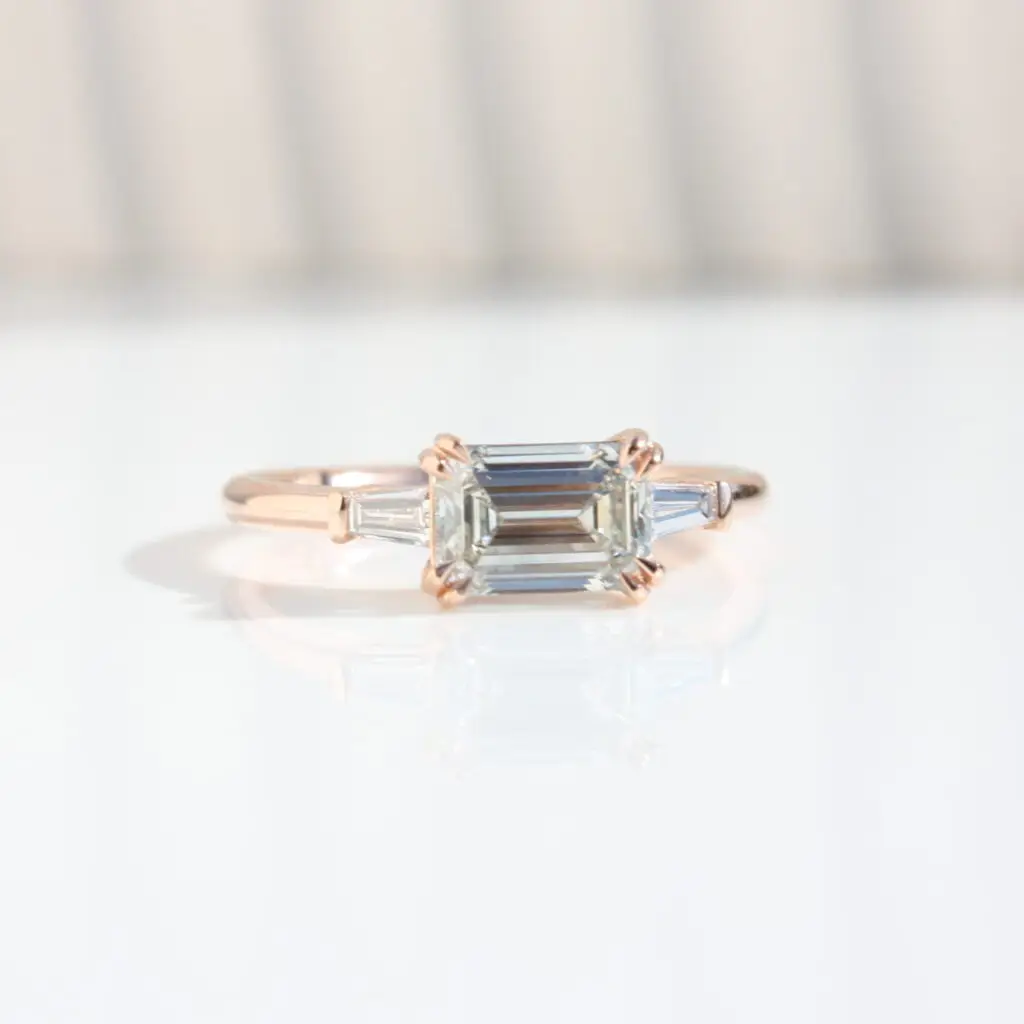

“From Art Deco elegance to contemporary refinement, this understated cut remains beloved for its clean, geometric lines and sleek modern aesthetic.”
Today, baguette gemstones continue to be a favourite among those who appreciate subtlety—a cut that whispers luxury. Its enduring appeal lies not only in its beauty but in its remarkable ability to marry history with modern design sensibilities.

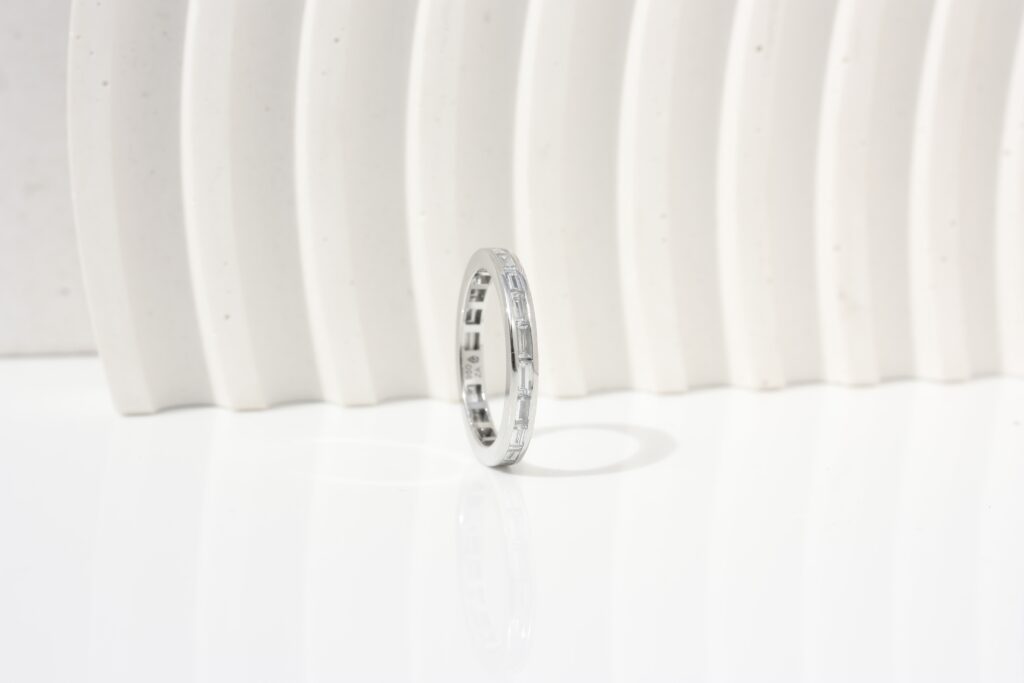
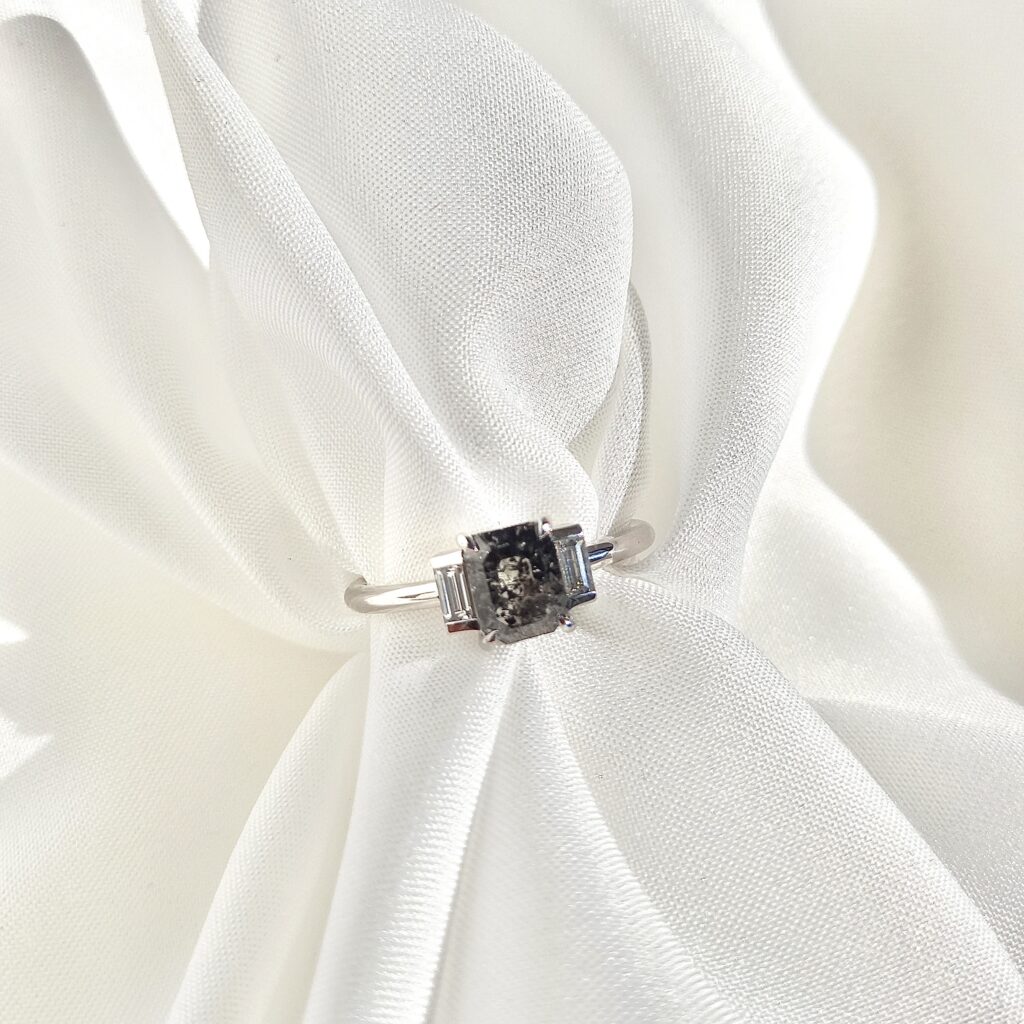


Additional resources:
https://4cs.gia.edu/en-us/blog/baguette-diamond-engagement-ring
